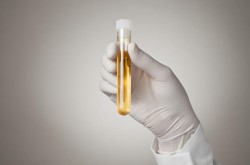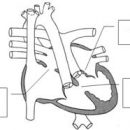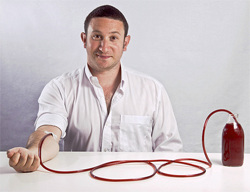
The main problem of blood donation is that blood is needed constantly, because not all of its components can be stored long. On the other hand, the intervals between blood giving must be sufficient to not damage the health of the donor. Therefore, you need a lot of donors, regularly delivering blood or its components. Most of all the need for platelet donors, as this procedure is the most time-consuming for the donor, and besides, it is impossible to be a platelet donor for too long - the body accumulates substances used to separate platelets from the rest of the blood.
In major cities, the need for donor blood is much higher than in small. This is primarily due to the fact that it is here that hospitals are located where patients come from from all over the region, and sometimes from all over the country. Only a person with a local registration can be a donor - this is due to the imperfection of donor databases (regional databases are not related to a single network). Take the blood from a random person risky - in this case, she must pass quarantination, t.E. Store for some time (from 3 months to six months), and only if during this time the donor did not show up hidden illnesses, such blood can be started in business. If the donor regularly passes the surveys, this problem is removed.
Who needs donor blood?
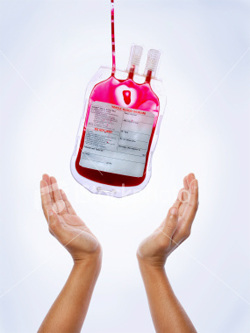
When we ask a similar question, first of all you think about the victims of various disasters. But in fact, they just need blood not so often. Much more often donor blood is required during childbirth - and quite quickly, the bill goes for seconds.
But the femalers consume not so much donor blood, as it would seem. Its main part goes to the treatment of those patients who need regular blood transfusions or its components. These are suffering from various anemias (Blackfan Daimond, Fanconi and DR.), patients with hemophilia, as well as those who undergo treatment of chemotherapy or radiotherapy. In hemophilia and some anemia, such transfusions should be regularly carried out - more precisely, life continues, in fact, as long as it is possible to get transfusions. In other cases of transfusion of blood components - part of the general therapy, at the end of which a person is completely healthy.
Our site considers it useful to tell about donation, we will try to get rid of fears before surrendering blood, because you, first of all, assist, should be treated for this exactly.
Many heroic stories are connected with blood donation. For example, during the blockade of Leningrad, the Leningrad Institute of Blood Transfusion Night for a day did not stop working. The only concession of military time was the transition to the billets of an exclusively first blood group - it can be transferred to all groups, which greatly simplifies transfusion in front-line conditions (cannot be confused).
Donor laid two weekends - the day of blood and another day for restoration, with salary preservation - and if the passage falls on weekends or for some reason, the donor goes to work, then these additional weekends are transferred to dates for the donor.
Types of blood delivery
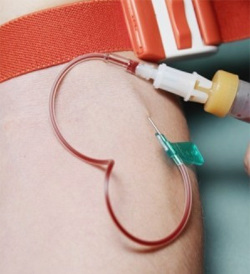
Blood can be given in several ways. The fact is that it is not usually poured by a patient «as it is», And its defined factions - what more needed at this particular point. In all cases, blood is taken from Vienna on hand, if some blood components are returned, they can be returned either in the same hand or to another.
You can pass in itself Whole blood - Doctors themselves will figure out what to do with it. Once at a single donor take 400-500 ml of blood.
Can Take thrombocyte - Here the procedure is somewhat more difficult. On the first day you need to be examined (there is nothing before that, there is nothing, the donor for analysis take 30 ml of venous blood). To the next or in a day, it is necessary to go through the procedure of blood delivery (one and a half hours on the device, which takes blood from the vein, filters platelets from it, and everything else returns donor, only 450 ml platelets are taken). Such a method is designed to ensure that it is possible to provide a patient with the necessary amount of platelets taken precisely from one donor - when mixing blood products of several donors, additional problems occur.
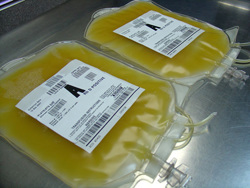
The examination is carried out in advance, since a disposable sterile set (needles-hoses-tanks) is charged to collect platelets in the device, and such sets are quite expensive.
There are two fundamentally different ways to deliver platelets: intermittent and hardware. Our site considers it useful to clarify the difference between these two ways. Intermittent thrombocitherapresis is that the blood portion is first selected, platelets are extracted from it, and the rest is filled back to donor, then the procedure is repeated. In the second case, the process occurs almost continuously - blood is taken from one hand, passed through the device, and immediately poured into the vein of the second hand, the process occurs continuously. Actually the second option is better in all respects, but requires a more complex apparatus, which, unfortunately, is not at all blood transfusion stations.
Can be handed separately Plasma of blood - Approximately the same procedure as thrombocytoparez, only without prior examination and on another apparatus. Blood particles are returned to the bloodstream, and the plasma goes to those in need. Dose of blood for 1 time - 400 ml.
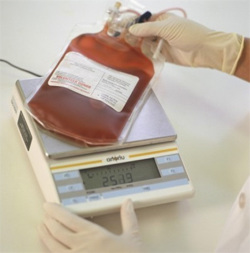
Even more exotic option - Delivery of granulocyte - derivatives of leukocytes. This type of blood is usually done as needed, since granulocytes are stored no more than 24 hours. On the eve of the donor make an injection of a special preparation that stimulates the output of granulocytes into the blood, the next day, the procedure is carried out similar to the thrombocytees. Granulocytes are needed for those at the moment, immunity is currently weakened (as a rule, this is the result of chemotherapy) and must be transferred to the recipient during the day, otherwise the transfusion will not bring due results.
How and where to donate blood?
There are special blood transfusion stations, close to you easy to find on the Internet. Promotions are held regularly to collect blood, and all the necessary coordinates and the donor are given almost for the handle in the right place.
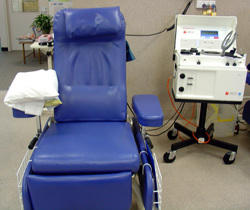
It is necessary to take a passport or a military ticket, with registration on the territory of the area where you are going to donate blood; You can capture a medical card (optional). Women in case of suspicion of pregnancy it is better to abandon blood donation.
It should also be borne in mind that blood is usually handed over in the morning (in the period from 9 to 11, check time) - this is in the interests and donor, and doctors. Donor - Because in the morning the body reacts better to blood loss, doctors - because it is not enough blood to get blood, it still needs to be processed for further storage.
Before the blood of blood, it is necessary to undergo a medical examination, for blood donor it is completely free. The examination includes inspection of the therapist (before each blood cottage), clinical and biochemical blood test, blood test for hepatitis, HIV, syphilis. Our site draws your attention that blood tests are necessarily carried out at the transfusion station, make them in any clinic and bring the certificate can not. Analyzes take a day or two, so as not to spend an expensive disposable system on substandard components. The first time also defines the group and the rhesus factor.
Blood group is a sign that is inherited. It is an individual for each person a set of specific substances called group antigens. It does not change throughout the human life. Depending on the combination of antigens, blood is divided into four groups - O (I), A (II), in (III), AV (IV). Blood groups were discovered in the XIX century.
Before each next hand, the blood test is carried out again to avoid infection of people to whom this blood will be overclit.
Required conditions for donation
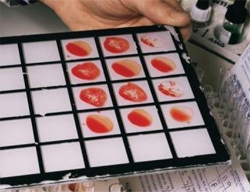
The donor can be not anyone who wants, there are a number of conditions, they include a list of transferred operations that are available diseases, weight and age of man, and some others. To become a donor, first of all it is necessary to have:
- registration in the territory of that region where they are going to take blood (this is due to the lack of a common donor database throughout the country);
- weight of more than 50 kg (concern for donor health);
- Age - Lower Plank 18 years old, the upper canceled, the decision takes the doctor in each case.
In order to avoid recipients, the absence of certain diseases is required (absolute contraindication, T.E. The blood donor, this person will never be in life). Do not hurry to search for a reference book and check the symptoms of the diseases listed below - if you do not know what it is, then, most likely, you have this and not:
AIDS, HIV-infection, syphilis, viral hepatitis, tuberculosis, Brucellosis, rapid tit, tularemia, lepreras, toxicoplasmosis, echinococcosis, tribanosomosis, filariasis, riste, leishmaniasis, malignant education, blood disease, organic CNS diseases, complete absence of hearing and speech, Mental diseases, Drug addiction, alcoholism, hypertension 2-3 Art., Ischemic heart disease, atherosclerosis, atherosclerosis, atherosclerotic cardiosclerosis, refrining endoarterite, nonspecific aortoarterite, recurrent thrombophlebitis, endocarditis, myocarditis, heart disease, bronchial asthma, bronchiectatic disease, lung emphysema, obstructive bronchitis, ahilic gastritis, Ulznaya ulcer and duodenal disease, chronic liver diseases, including toxic nature and unclear etiology, calculous cholecystitis with repeated attacks and phenomena of cholangitis, liver cirrhosis, radiation disease, disease of the endocrine system in case of a pronounced disorder of functions and metabolism, severe myopia ( 6 d and more), trachoma, full blindness, generalized psoriasis, erythrodermia, eczema, pyodermia, sicosis, red lupus, bubble dermatoses, fungal lesions of the skin (microsporry, tricoephyms, favus, epidermofitium) and internal organs (deep myoses), mercury diseases Skin (piedermic, furunculosis, sicosis), osteomyelitis acute and chronic, transferred operation with the removal of organ or transplantation of organs and tissues.
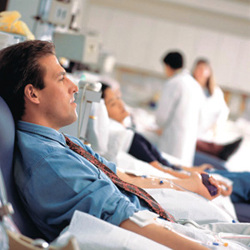
Further, our site will present a list of diseases that are not absolute contraindications for donation, but require after some time to identify them:
- If you got angry, influenza, ORVI, from the moment of recovery (not to be confused with a decline in temperature, meaning complete recovery) must pass more than a month;
- If you had an aggravation of allergic diseases, you will be made to blood delivery in 2 months from the moment of stopping the acute period;
- If you hurt the abdominal typho, the donor can be in a year from the moment of recovery;
- If you have been in contact with hepatitis A sick, from now on must pass more than 3 months; with patients with hepatitis B and C - more than a year.
- Some limitations are superimposed and after operations:
- If you have a surgery without removal of organs (including abortion), then from this moment it must pass more than 6 months;
- If you removed the tooth, you can pass blood not earlier than in 10 days;
- If you have a tattoo or treated you Acupuncture, That donor can be done a year later (in fact, for identifying possible infections, 6 months is enough, but it is written in the relevant law).
Selected conditions for women and, in particular, for young mothers. Dumping blood is allowed if:
- from the moment of menstruation passed more than 5 days;
- After the birth of a child for more than a year;
- Since the last feeding milk has passed more than 3 months.
In addition to the above, the following requirements are presented to the donor:
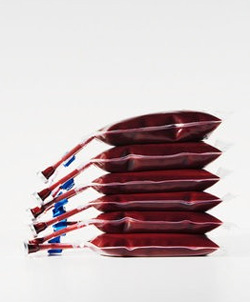
- Those who were made vaccinated are allowed to give blood in 30 days (and if the vaccination from hepatitis B - in a year or more);
- If any antibiotics were taken, 2 weeks should pass before the blood;
- If analgesics were taken, three days are enough;
- from the date of reception of alcohol must pass 2 days.
For those who returned from the abroad, there are also temporary limitations, it is connected again with the need for time to identify possible disease (if any). For spending abroad for more than 2 months, it is possible to pass blood only in six months. Well, if the route was a country where such a disease is often found as malaria, the donor will be allowed to give blood not earlier than in 3 years.
Procedure for delivery of blood
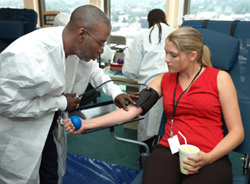
It is primarily important to remember that before surrendering blood you need to eat, respectively - at least in two days, exclude fat, fried, smoked, sharp, milk, eggs. Drink a lot of fluid, but not alcohol (beer is also considered an alcoholic beverage). Do not take medicine, especially Aspirin and Analgesic. At least an hour before the cottage do not smoke. And be sure to sleep. On the transfusion station you need to come on an empty stomach.
The actual procedure of blood delivery begins with a medical examination (measuring blood pressure and pulse frequency, take blood from the finger on hemoglobin) and filling the donor questionnaire. Then the donor goes to a special office for blood delivery and is arranged in a half-seated position on the couch chair. Arm (or two hands depending on the method of blood) wipe with alcohol on the inside of the elbow, pinch down the elbow and ask «Show pump» fist (can give something in the palm and ask to squeeze-squeeze) to find a vein. Needle neatly introduced in Vienna (disposable, printed in donor), it almost does not hurt. Needle and part of the system is attached to the hand of adhesive tape so that the donor does not damage his hand with a careless movement.
During the long-term procedure, the donor can leave one, periodically go to check out as it, but with those who came for the first time, so try not to do. Yes, and usually there are other donors, who will call a doctor in the case of.
Sometimes they offer to watch a film in the process of delivery, but usually the stations simply do not have such equipment. It makes sense to take a player with you (not a book, since most likely both hands will be busy).
All the process went. Typically take 400-450 ml of blood (or the desired fraction). The surrender of whole blood takes 5-10 minutes, thrombocytoofaresis - 1.5-2 hours, the delivery of granulocytes is about the same, plasma - 40 minutes (this is the time actually on the procedure, at the transfusion station will have to spend a few more time - medical examination before, rest after ). After all that is needed (and merged back into the bloodstream, everything you need), the nurse will impose a bandage on the arm and remind you that it is not worthwhile in the next few hours. Usually after a couple of days there are no trace, in the case of complications you can always call the same blood transfusion stations and ask how to be.
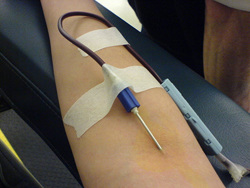
After the procedure of blood delivery, our site advises not to rush to leave the station - it is better for some time to calmly sit so that the body calms down, and if suddenly hesides the head, then it is better to be close to nurses who know that you know what you know.
For a farewell, you need to take a certificate of free donation (needed for registration of the weekend at work), if there is an opportunity - not in one copy (alas, the reality is that if you suddenly become not good on the street or in transport, and even with fresh traces on veins, you will rather send a drug addict than a donor). If you take blood for a specific person - you need to trace it so that it is also reflected in the certificate (in this case, they exactly need at least 2 copies - one you give a doctor who treat someone you help, and the doctor will get blood for Patient; And the second submit to the employer).
Also reluctant for meals. When issuing you will be explained, where to use it - usually when the transfusion station has a dining room, a buffet or something like that.
How best to restore after the summer cottage - will be explained at the point of delivery. Mostly, this is minimum of physical exertion, high-quality food, a sufficient amount of liquid and, in general, a healthy lifestyle.
Feel
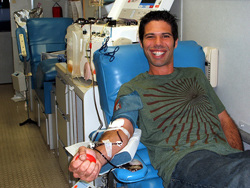
Sensations in donation are quite individual. The pain from the needle in Vienna is almost imperceptible, and if there is still a fear of pain, then you can come half an hour before and get an anesthetic ointment (it does not act immediately, because such a reserve of time).
When surrendering solid blood or erythrocytes, dizziness is possible. Plasma delivery leads to light euphoria.
When surrendering platelets, you can feel freezing - the side effect of using the citrate when separating platelets (it is used so that blood does not curl directly in the system), which flushes calcium. In this case, you need to say a doctor, it will make the injection of calcium gluconate and wrestles you with a blanket. Feelings from such an injection - Wave of heat, heat, improved mood.
With the passage of granulocytes, there are no special sensations, they all fall on the preparation phase - when the body produces leukocytes strongly. Pass in the same way as the initial stages of a cold.
But again, our site reminds that everyone is separate after the blood delivery will be different. In most cases, the donor well-being remains within the normal range, the time for restoration is minimal or not required, the state is quite efficient.
Periods between blood surrender
After blood delivery (on platelets, erythrocytes or solid), there should be at least 60 days before the next blood dacha or 30 days before the cottage of blood components. Recommended after 4-5 cottages to take a break for at least three months - to restore. In total, over a year, solid blood is allowed to take no more than 5 times.
After the thrombocytees are given, two weeks or more prior to the next blood or its components. Similar deadlines are established with recent plasmapheresse. The rate for putting a plasma that cannot be exceeded - up to 12 times a year.
If you have passed granulocytes, you can come to the point of delivery of blood after 14 days to pass plasma and platelets, and after 30 days - for the delivery of solid blood and granulocytes.




